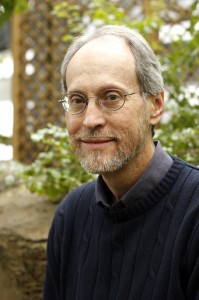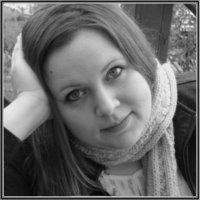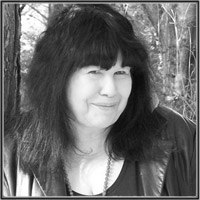| ASU Polytechnic hosts TED2012 webcast Wednesday, February 29, 2012 9:30 a.m. – 7:45 p.m. Student Union, Cooley BallroomsASU’s Polytechnic campus will host a live webcast of TED2012 from 9:30 a.m. – 7:45 p.m., Feb 29. TEDx is hosted by Barrett, The Honors College at Polytechnic campus and will be held in the Cooley Ballrooms.Live speakers at ASU Polytechnic: Lee Gutkind: (11:15 a.m. – 12 p.m.) Dubbed by Vanity Fair as “the Godfather behind creative nonfiction,” Gutkind is an author and founder of Creative Nonfiction, the first and largest literary magazine to publish nonfiction exclusively. His latest book, “Almost Human: Making Robots Think” was featured on the Daily Show with John Stewart. Gutkind spent six years as a fly-on-the-wall researcher at the Robotics Institute at Carnegie Melon University in Pittsburgh where scientists and students are working to design, build and test robots so advanced that will work alongside humans. “Almost Human” is a portrait of robotic subculture. Gutkind is the Distinguished Writer-in-Residence in the Consortium for Science, Policy & Outcomes at ASU and a professor in the Hugh Downs School of Human Communication. Jennifer Gale: (1:45 – 3:15 p.m.) Gale is a local advocate for sustainability and co-founder of “Paper or Plastic? Neither One Please!” Her work addresses the volume of plastic disposables as a vital issue for the planet. Solutions Exhibition: (5 – 6 p.m.) Sponsored by Changemaker Central and the Programming and Activities Board, the Solutions Exhibition is a forum for students to showcase new ideas and learn how to transform ideas into reality. Attendees at TEDx may stay for the entire day’s schedule or drop by for a shorter time period throughout the day. Workstations will be set up, and attendees are welcome to work on laptops during the event. Admission is free; food will be served throughout the day. For more information, visit http://barrettpoly.asu.edu/2012/01/tedxbhcpoly/ or call (480) 727-5399. A list of speakers for TED event can be found here. |
Creative Nonfiction magazine
An Interview with Lee Martin
 Superstition Review is excited to announce our publication of Lee Martin for our next issue, due out this December.
Superstition Review is excited to announce our publication of Lee Martin for our next issue, due out this December.
Martin is the author of The Bright Forever, and three other novels, including his latest, Break the Skin, which was published by Crown in June 2011. His fiction and nonfiction have appeared in such places as Harper’s, Ms., Creative Nonfiction, The Georgia Review, The Kenyon Review, Fourth Genre, River Teeth, The Southern Review, Prairie Schooner, and Glimmer Train. He is the winner of the Mary McCarthy Prize in Short Fiction and fellowships from the National Endowment for the Arts and the Ohio Arts Council. He teaches in the MFA Program at Ohio State University, where he was the winner of the 2006 Alumni Award for Distinguished Teaching.
Click here for a trailer for Martin’s latest novel, and here for a brief clip of Lee Martin speaking about the story and characters he has created for it.
Superstition Review also had the opportunity to speak with Martin:
Superstition Review: What first made you fall in love with literature?
Lee Martin: I was an only child who spent a good deal of time sitting on porches, in kitchens, in barber shops, listening to the adults tell stories. I was always in love with language. My mother was a grade school teacher, and she had books in our home. She read to me when I was a child. When I started school, I asked my teacher for permission to take my books home to show my mother. I was so proud of them! Before those first school days, when I stayed with my grandmother while my mother was teaching, I would take books off the shelves in her bedroom and sit on the floor with them. I couldn’t read, but I loved the way the books felt in my hands. I loved the way they smelled. I loved the patterns the text made on the pages. All of this is to say, that from an early age I knew books and I had an aesthetic response to them. It was only natural that I would eventually want to write books of my own. I got serious about the prospect of that when I went to the MFA program at the University of Arkansas in 1982. Five years later, I published my first story. At the time, I decided to apply at Arkansas, I was coordinating an Educational Talent Search program that helped culturally or financially disadvantaged people get into college. I shouldn’t admit this to the taxpayers (we were a federally funded program), but I always found ways to spend some time working on my stories when I was supposed to be doing other things for my job. I knew, then, it was time to make a choice to either pursue my craft completely or to give it up. My decision to accept the offer from Arkansas sent me down a path that I’ve never regretted.
SR: What are some of the best things about being both a teacher of literature, as well as a creator of it?
LM: I do love to teach. I love the intense conversations we can have over the choices a writer has made in a story or an essay. I love seeing students develop their skills. I also love those moments of solitude when it’s just me and the page, and I have this material I want to shape, and little by little I do it, which makes me feel that I’ve reached into the world and done something with a little part of it. I like the uncertainty of that process and how it finally comes to something that coheres. Finally, I love doing a reading or talking to classes at the universities I visit. I love performing my work, and I love sharing what I’ve come to know over the years with writers who are just at the beginning of their journeys. I guess, to answer your question more pointedly, I love it all. I love everything about being a teacher and a writer.
SR: If you could offer your students–or any aspiring writers for that matter–just one piece of advice, what would it be?
LM: I think it’s so important to begin to read a good deal and to read the way a writer does–to read with an eye toward the various artistic choices that a writer makes and what those choices allow and, perhaps, don’t allow. Young writers in undergraduate programs will have plenty of opportunity to read the way a literary theorist does, but it’s important to remember that stories, poems, essays, and novels are made objects. If you want to write them yourselves, you have to start figuring out how they get made.
Look for Lee Martin’s work in the forthcoming issue of Superstition Review.
Launch of Issue 7: Poetry
Superstition Review Issue 7 has launched and to celebrate we will be featuring blog posts about our artists and authors. Today we will be highlighting a few of the talented poets who are featured in Issue 7.
 Angela S. Gentry is the two-time recipient of the Devine Summer Fellowship in Poetry from Bowling Green State University. Her first chapbook, Stirrings of Movement, was released in 2010 from Finishing Line Press. She received her BA in Christian Education from Cedarville University and her MFA in Poetry from BGSU. In her spare time, she would like to build a tree house, in addition to writing, but finds herself inordinately occupied with evaluating student papers. She currently resides in Michigan. Read her poem “My Barber” featured in issue 7. Angela Gentry’s Website
Angela S. Gentry is the two-time recipient of the Devine Summer Fellowship in Poetry from Bowling Green State University. Her first chapbook, Stirrings of Movement, was released in 2010 from Finishing Line Press. She received her BA in Christian Education from Cedarville University and her MFA in Poetry from BGSU. In her spare time, she would like to build a tree house, in addition to writing, but finds herself inordinately occupied with evaluating student papers. She currently resides in Michigan. Read her poem “My Barber” featured in issue 7. Angela Gentry’s Website
 Marge Piercy is the author of 18 collections of poetry, most recently The Crooked Inheritance and this spring, her second volume of new and selected poems 1980-2010 The Hunger Moon, out from Knopf. She has published 17 novels, most recently Sex Wars. Two of her early novels, Dance The Eagle To Sleep and Vida, are being republished with new introductions by PM Press this fall. Her work has been translated into 19 languages. Her memoir Sleeping With Cats is available from Harper Perennial. Read her four poems featured in issue 7. Marge Piercy’s Website
Marge Piercy is the author of 18 collections of poetry, most recently The Crooked Inheritance and this spring, her second volume of new and selected poems 1980-2010 The Hunger Moon, out from Knopf. She has published 17 novels, most recently Sex Wars. Two of her early novels, Dance The Eagle To Sleep and Vida, are being republished with new introductions by PM Press this fall. Her work has been translated into 19 languages. Her memoir Sleeping With Cats is available from Harper Perennial. Read her four poems featured in issue 7. Marge Piercy’s Website
 Matthew Gavin Frank is the author of Barolo (The University of Nebraska Press), Pot Farm (forthcoming from the University of Nebraska Press), Warranty in Zulu (Barrow Street Press), The Morrow Plots (forthcoming from Black Lawrence Press/Dzanc Books), Sagittarius Agitprop (Black Lawrence Press/Dzanc Books), and the chapbooks Four Hours to Mpumalanga (Pudding House Publications), and Aardvark (West Town Press). Recent work appears in The New Republic, The Huffington Post, Field, Epoch, AGNI, Crazyhorse, Indiana Review, North American Review, Pleiades, Crab Orchard Review, The Best Food Writing, The Best Travel Writing, Creative Nonfiction, Prairie Schooner, Hotel Amerika, Gastronomica, and others. He was born and raised in Illinois and teaches at Northern Michigan University. Read his poem “The Sticking-Place, Stripped Screws” in issue 7. Matthew Gavin Frank’s Website
Matthew Gavin Frank is the author of Barolo (The University of Nebraska Press), Pot Farm (forthcoming from the University of Nebraska Press), Warranty in Zulu (Barrow Street Press), The Morrow Plots (forthcoming from Black Lawrence Press/Dzanc Books), Sagittarius Agitprop (Black Lawrence Press/Dzanc Books), and the chapbooks Four Hours to Mpumalanga (Pudding House Publications), and Aardvark (West Town Press). Recent work appears in The New Republic, The Huffington Post, Field, Epoch, AGNI, Crazyhorse, Indiana Review, North American Review, Pleiades, Crab Orchard Review, The Best Food Writing, The Best Travel Writing, Creative Nonfiction, Prairie Schooner, Hotel Amerika, Gastronomica, and others. He was born and raised in Illinois and teaches at Northern Michigan University. Read his poem “The Sticking-Place, Stripped Screws” in issue 7. Matthew Gavin Frank’s Website
 Patricia Clark is Poet-in-Residence and Professor in the Department of Writing at Grand Valley State University. Author of three volumes of poetry, Patricia’s newest book is She Walks into the Sea; she has also published a chapbook, Given the Trees. Patricia’s work has been featured on Poetry Daily and Verse Daily; she has won Mississippi Review’s Poetry Prize; and been honored as the 2nd prize winner in the 2005 Pablo Neruda/Nimrod International Journal Poetry competition. Her poems have appeared in The Atlantic Monthly, Poetry, Slate, Stand, The Gettysburg Review, and many other literary magazines. Read her poem “Until it Speaks” in issue 7. Patricia Clark’s Website
Patricia Clark is Poet-in-Residence and Professor in the Department of Writing at Grand Valley State University. Author of three volumes of poetry, Patricia’s newest book is She Walks into the Sea; she has also published a chapbook, Given the Trees. Patricia’s work has been featured on Poetry Daily and Verse Daily; she has won Mississippi Review’s Poetry Prize; and been honored as the 2nd prize winner in the 2005 Pablo Neruda/Nimrod International Journal Poetry competition. Her poems have appeared in The Atlantic Monthly, Poetry, Slate, Stand, The Gettysburg Review, and many other literary magazines. Read her poem “Until it Speaks” in issue 7. Patricia Clark’s Website
 Tanaya Winder is from the Southern Ute and Duckwater Shoshone Nations. She graduated from Stanford University in 2008 with a BA in English. Tanaya was a finalist in the 2009 Joy Harjo Poetry Competition and a winner of the A Room Of Her Own Foundation’s Spring 2010 Orlando prize in poetry. Her work appears in Cutthroat magazine, Yellow Medicine Review, Adobe Walls, Barrier Islands Review, and Lingerpost. She is the co-editor of a forthcoming collection Soul Talk, Song Language: Conversations with Joy Harjo. She is currently pursuing a MFA in Poetry at the University of New Mexico. Read her two poems published in issue 7.
Tanaya Winder is from the Southern Ute and Duckwater Shoshone Nations. She graduated from Stanford University in 2008 with a BA in English. Tanaya was a finalist in the 2009 Joy Harjo Poetry Competition and a winner of the A Room Of Her Own Foundation’s Spring 2010 Orlando prize in poetry. Her work appears in Cutthroat magazine, Yellow Medicine Review, Adobe Walls, Barrier Islands Review, and Lingerpost. She is the co-editor of a forthcoming collection Soul Talk, Song Language: Conversations with Joy Harjo. She is currently pursuing a MFA in Poetry at the University of New Mexico. Read her two poems published in issue 7.
The full magazine with featured art and artists from issue 7 can be found here.